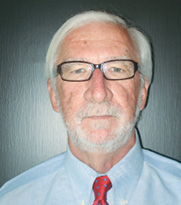Record farm income and never before seen low interest rates over the last several years have enabled many dealers to make more money than they have ever made. Barring unforeseen economic and/or political events, all indicators point to continued prosperity for those dealers committed to managing their business successfully.
Dealers interested in being in business for the long haul would be wise to decide whether they are going to go forward pursuing a strategy bent on increasing market share or whether they are going to manage their business with the goal of maximizing dealership profit. Contrary to what many think, these are mutually exclusive goals with market share leadership rarely leading to profit optimization.
One tool that may be helpful in assisting dealers in selecting a strategic direction is a book entitled “The Myth of Market Share: Why Market Share is the Fool’s Gold of Business” by Richard Miniter, a former writer for the Wall Street Journal. Miniter’s succinct, yet trenchant analysis of why the pursuit of market share is pure folly should be read by all dealers who believe that this illusory goal can lead to bigger and greater profits.
Market share leaders focus on last quarter’s unit sales while profit leaders look toward tomorrow’s opportunities. Market share leaders focus on their prospective volume bonus check while profit leaders gravitate toward internal metrics that will enhance their bottom line. Market share leaders reward their sales force on increasing market share while profit leaders reward their managers on improving their department’s profits. Market share leaders focus on appeasing their supplier or outselling their competitor while profit leaders look to satisfying their customers.
Market share leaders pursue share of market as a goal, while profit leaders achieve market share as the result of sustaining a meaningful competitive advantage. As stated in Miniter’s book, “market share, rather than leading to profitability, was the result of successful business practices that also led to profitability.”
Miniter draws on the research undertaken by Windermere Assoc., a California-based consulting firm, who explored the correlation between market share and profitability by analyzing share and profit results from 3,000 public companies in 240 industries. The study found that “among the top four firms in each of 240 industries, the market share leader led the industry in pretax returns on assets only 29% of the time — only 4% better than random chance.”
Conversely, the aforementioned study also found that the number four firm in each industry, or those with the lowest market share, actually had a higher return on assets than their other three competitors 23% of the time. Thus, nearly one in four times, the firm with the lowest market share actually had the highest profits. In summary, the study found that “more than 70% of the time the firm with the biggest share of the market doesn’t have the highest rate of return,” as measured by their return on assets. Clearly, the level of market share is not the primary driver of bottom line profitability.
Rather than focusing on market share, dealers in for the long haul would be better served by creating an open, informal, trust-based culture that is oriented toward high expectations with a commensurate reward system that clearly differentiates between high performers and low performers. Furthermore, future oriented dealers should have a marketing strategy that bases machinery sales on a meaningful competitive advantage as opposed to low prices that are almost always the hallmark of a market share leader.
As Miniter writes, “profit leaders do become market leaders fairly regularly, but rarely does a market leader become a profit leader.” In those cases where the profit leader is also a market share leader, market share was more a by-product of operational policies rather than the result of a specified target or goal.
Many people believe that the legendary Jack Welch of General Electric fame was a proponent of market share because of his famous proclamation that if you couldn’t be number one or two in a given industry, then you should exit that industry. Not surprisingly, this famous dictum was based more on a thirst for profits than a quest for market share. As Welch said:
“Too often we measure everything and understand nothing. The three most important things you need to measure in a business are customer satisfaction, employee satisfaction and cash flow. If you’re growing customer satisfaction, your global market share is sure to grow, too. Employee satisfaction gets you productivity, quality, pride and creativity. And cash flow is the pulse — the key vital sign of a company.”
So, the question moving forward should be: “Are you going to pursue market share, or are you going strive to be number one in profits?” The decision should be as clear as the expected results.







Post a comment
Report Abusive Comment